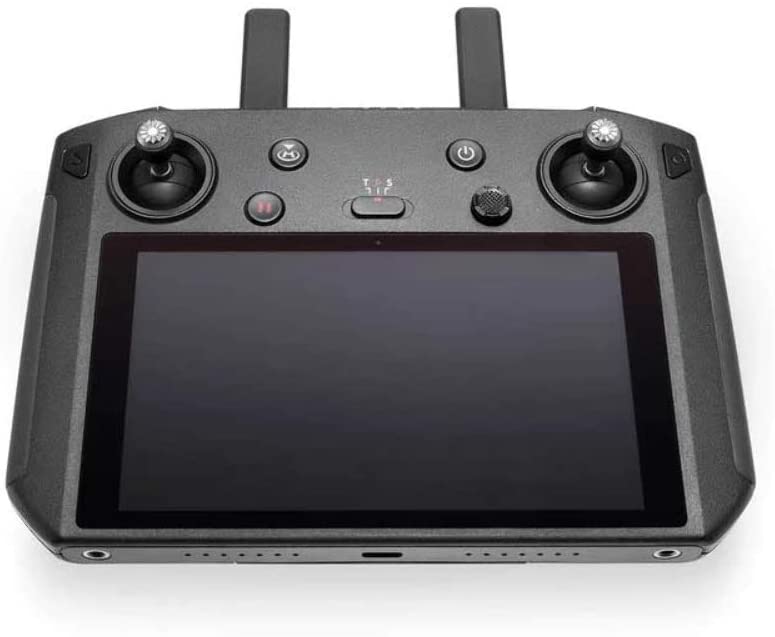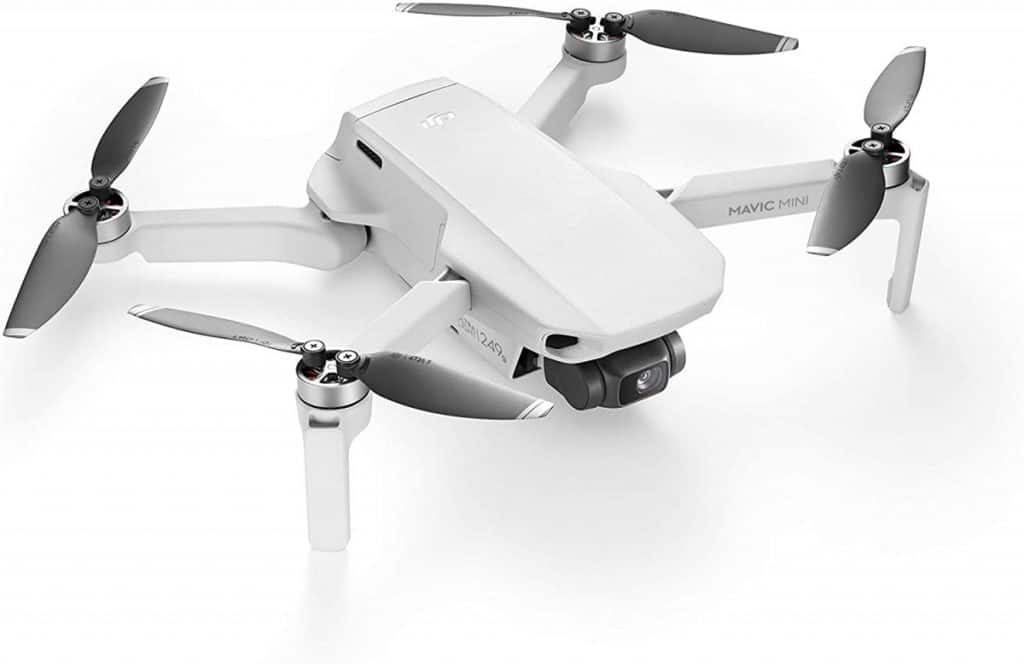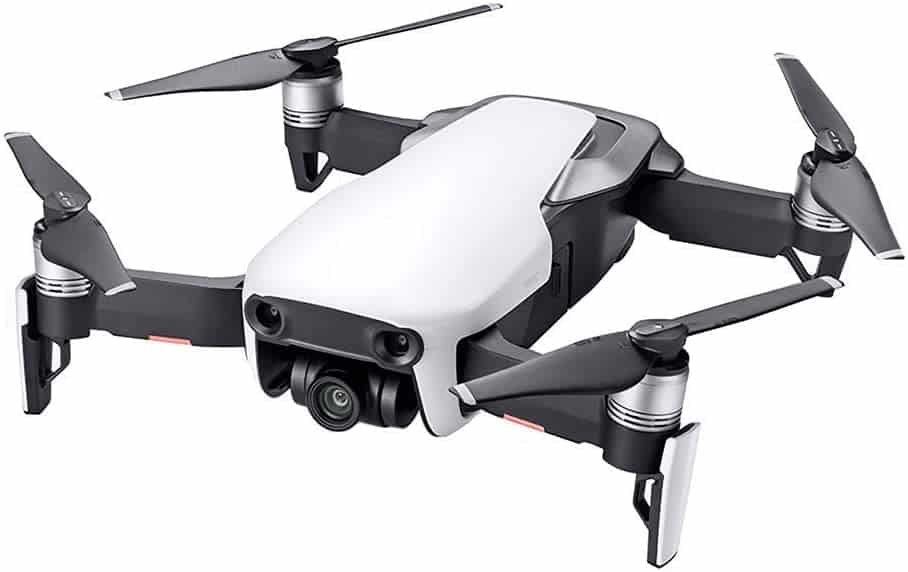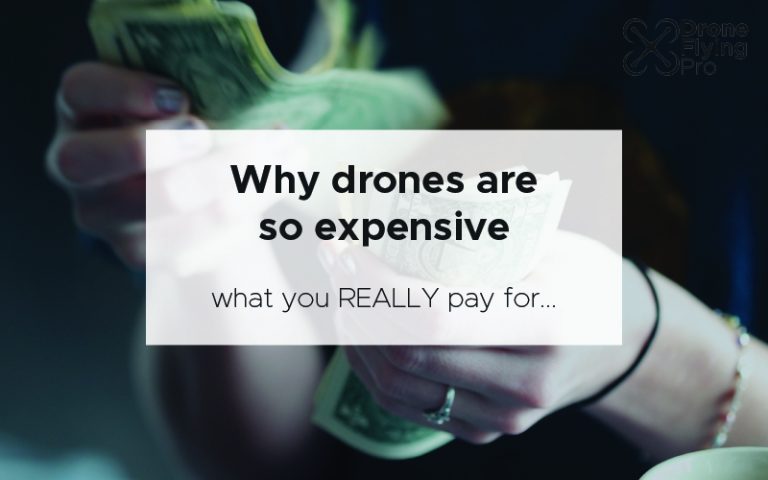Everyone who has felt the need to purchase a drone and excitedly anticipated getting a flying gadget has been deflated by one thing. The cost of a good quality drone! There’s no doubt that is is a relatively large outlay for anyone – especially if you don’t know what drone you want. There are so many features, styles and options that it can get confusing about which one to actually buy. Does cheap mean rubbish? Does expensive mean that there will be things that you don’t use – or does it mean quality manufacturing? Let’s talk about why drones are so expensive…
Drones are expensive because they are at the apex of a load of high tech software and electronics. Small motors, advanced AI software, and typical business cost too! Drones are the result of so many aspects that they can be very expensive. Let alone the actual cost of the materials and electronics for manufacturing, there’s a lot of research of development that goes into getting a drone in the air and keeping it there! When you buy an expensive drone what you are really buying is TRUST that your drone will do what you want it to do – and that, in my opinion, is priceless.
If you were to think about starting a drone manufacturing company from scratch what would you need? Electrical engineers, software developers, product designers, a workforce to build them, and the R&D team, photography experts…the list goes on. To this day and after flying a number of different drones – part of the experience still feels like magic. Especially when there are a number of advanced automation while flying, like obstacle detection and automated shots!
Getting a drone in the sky takes such a huge number of design and engineering skills as well as high tech equipment that the fact is – it all adds up. The most expensive drone on the market is about $18,000 and is the Freefly Alta 8. You can find drones all the way down to $200 if you are looking for a toy drone.
Really it comes down to what you want the drone for and the quality that you are willing to pay for. Check out my other article on whether drones are worth it – click here. Let’s look at why some drones are more expensive than others.
Why some drones are more expensive than others?
A drone gets more expensive based on the hardware and advanced software included. Want a drone that can carry a DSLR? It’ll be more expensive. Need a drone to fly in high wind conditions and remain stable? You’ll need some expert level sofware and harware to do that – it’ll cost more money.
Let’s look at all of the higher end components that a drone may have:
Camera
Most higher-end consumer-level drones will have a camera installed on the front of the drone. The DJI drones have become the benchmark for great cameras and software. However, their drones also have a wide range of cameras and the more expensive the drone – the better the camera.
| Product | Camera specifications | Price (USD) |
|---|---|---|
| DJI Mavic Mini | 12 MP, 2.7 K: 2720×1530 25/30 p FHD: 1920×1080 25/30/50/60 p | $590 |
| DJI Mavic Air 2 | 12 MP and 48 MP, 4K Ultra HD: 3840×2160 24/25/30/48/50/60 fps 2.7K: 2688×1512 24/25/30/48/50/60 fps FHD: 1920×1080 24/25/30/48/50/60/120/240 fps 4K Ultra HD HDR: 3840×2160 24/25/30 fps 2.7K HDR: 2688×1512 24/25/30 fps FHD HDR: 1920×1080 24/25/30 fps | $799 |
| DJI Phantom 4 | 20MP, C4K:4096×2160 24/25/30/48/50/60p @100Mbps 4K:3840×2160 24/25/30/48/50/60p @100Mbps 2.7K:2720×1530 24/25/30p @80Mbps 2.7K:2720×1530 48/50/60p @100Mbps FHD:1920×1080 24/25/30p @60Mbps FHD:1920×1080 48/50/60 @80Mbps FHD:1920×1080 120p @100Mbps HD:1280×720 24/25/30p @30Mbps HD:1280×720 48/50/60p @45Mbps HD:1280×720 120p @80Mbps | $999 |
| DJI Inspire 2 | Zenmuse X4S, Zenmuse X5S and Zenmuse X7 cameras (sold separately). Must purchase lens too. | $4,400 |
You can see from the above table that the more expensive the drone in the DJI series the more the drone costs. In fact, the most expensive in the table – comes with no camera what so ever. You have to buy them separately – they can cost upwards of $3,000! Once you get to that level of drone – you really need to look at the other components to make sure the shot is good as it can be. That’s where the camera’s gimbal comes into play:
Gimbals
A gimbal is the part of the drone that attaches the camera to the body. It provides the camera with a large range of motion and also ensures that the camera is held as still as possible. The gimbal works alongside the camera to keep the footage as smooth as possible while the drone moves in the wind and rolls and pitches as part of its movement.
As the drones get more expensive the technology in the gimbals gets more and more complicated. Take the difference in options from the two ends of the DJI price range! The Mavic Mini and the Inspire 2:
| DJI Mavic Mini (US$590) | DJI Inspire 2 (US$4,400) | |
|---|---|---|
| Mechanical Range | Tilt: -110° to 35° Roll: -35° to 35° Pan: -20° to 20° | Pitch: -140° to+50° Roll: -50° to+90° Pan: ±330° |
| Controllable Range | Tilt: -90° to 0° (default setting) -90° to +20° (extended) | Pitch: -130° to+40° Roll: ±20° Pan: ±320° |
| Max Control Speed (tilt) | 120°/s | Pitch: 180°/s Roll: 180°/s Pan: 270°/s |
| Angular Vibration Range | ±0.01° | ±0.01° |
You can see that more money gets you more options and better gimbal control!
Remote controllers

Having a nice to use remote control is one of the most important aspects of drone flying from a pilot’s perspective. But not all drones come with a fancy remote control. In fact, the lowest priced drone relies on using an app and the wifi or Bluetooth from your mobile to connect and control the drone.
More expensive drones come with a controller that uses a smartphone or tablet as a screen. The benifits of having a remote controller are:
- Longer effective control range
- Lower delay of real-time
- Less interference from external sources.
- Longer battery life of controller (most are rechargeable)
- Extra controls and programable shortcut buttons (I use mine for gimbal control)
If you need just a few photos and a selfie your smartphones is all you need. However the extra controls and functions on a remote are necessary for professional and advanced hobby drone fliers.
Check out my other article on whether or not drones need WiFi – click here to read.
Batteries
Lastly, the more expensive the drone the heavier it tends to be and therefore the bigger the battery needs to be to keep the drone in the air. Consumers of drone technology are expecting longer and longer flight times and it is amazing to me that the drone manufacturers keep on delivering.
It’s certainly not as simple as just including more and more storage capacity. As consumers we want reliable battery discharge (to keep flying longer) and also fast charging so we can get back in the air quicker.
I recommend to most drone buyers to buy one extra battery for their drone. There isn’t much you can’t do without one extra battery. I’ve very rarely needed to fly for more that two batteries worth of time. It’s all about the planning!
We know the prices of drones as consumers but what are regular mark up prices of drones? Maybe that’s where all the extra expense comes from? Businesses need to turn a profit, right?
How much does it cost DJI to make a drone?
The answer to this is a closely guarded secret I’m sure but we can look at the parts and make an estimate on how much the raw materials cost. Also, there’s some indication from retailers of drones.
Typically high value (and high volume) tech products have a 20% mark up in their wholesale price. As an example, if DJI lists the Phantom Vision 2+ at $1159, the wholesale maybe $900 or close to it. Estimates of the material and labour costs of a product like the DJI Phantom are in the region of $200-250 in bulk. The single largest cost in the system is the control electronics, which could be about $50-75 to manufacture. The other expensive parts are the motors ($20-30) and power electronics ($20-30).
There’s probably not much margin in drones manufacturing and DJI would make a fair bit of more money in the sale of accessories, such as extra battery packs, guards and the “fly more” additions – which bundle together a load of accessories for a discounted price.
The price could make you consider buying a cheaper “knockoff” version of a drone. However, be careful that you actually get what you want. Each dollar that you save is a dollar (or more) of quality that is removed. Check out this comparison of a REALLY cheap drone with one of the best in the market by indy mogul:
Clearly, it’s a little bit too much of a difference for the test to really provide a clear idea of what features you lack when saving money – but it does show you than when you buy an expensive drone you are buying moire than the parts – you are buying TRUST!
I know that I trust my favorite drone (MAVIC AIR) more and more each time I fly it! That feeling is priceless!
How much does a “nice” drone cost?
The great thing about drone technology is that there is a wide variety of options at the moment and the “best on the market” is probably not the drone your should be buying!
For children and people who don’t want a fancy camera set up with their drones, you can buy drones for as little as $50. At this price point, you will be sacrificing a lot of the best drone flying experience. You will not have a controller or have a very cheap controller and certainly no flight automation. The flight time will also be in the range of 5 – 6minutes as the batteries will be very small.
What is the best inexpensive drone?

So, let’s assume that by “nice” we mean a drone with a camera as well as a drone that will be a pleasure to fly. Here are the two entry level drones that you can purchase:
- Best small beginner drone – DJI Mavic Mini (click here for the current price on Amazon) – This drone is affordable, very beginner-friendly, and is the perfect first drone. It is under 250g and packs in HD video at 60 frames per second (you can do awesome slow-mo shots). It has auto return to home but lacks collision sensors in the more expensive drone. Fly it clear of obstacles however and you’ll never need them!
- Best for the camera – Parrot Anafi ( click here for the current price on Amazon) – This drone is inexpensive and is packed full of beginner-friendly features. It has an impressive 4K camera and zoom capability making it the perfect option for those looking for full camera features on a budget.
Check out my page on the run down for beginner drones – click here!
What is the best drone for the money?

However, this is what I would recommend for a first introduction to a “nice drone”:
When I first started to look for a drone – I was really tempted to get the Mavic Pro. But I’m pleased I did not! I was using my drone to capture B-roll footage for my daily LinkedIn vlog. So It needed to fit in my bag and not be too heavy. That’s exactly what I got and MORE!
The person I bought it off said I may not need another drone – and he is absolutely right…here’s why:
- It is small enough to carry EVERYWHERE with me – capturing b-roll footage is the best addition to a blog. This drone folded down to a tiny and lightweight package. I wasn’t willing to sacrifice any more space on my bag for its function.
- It is inexpensive – I just couldn’t justify spending a heap of money on the best drone. This was the least expensive non-toy drone around!
- Batteries are easy to come by – extra flight time was important to me. I was tempted to get the “fly more” package but on reflection, I only wanted the extra battery for extra flight time – so I just bought that.
- Good flight time – This drone has a good but not great flight time. At first, I was always a little annoyed that I had to return to home after about 16 minutes. However, after the excitement wore off I found I was always landing with plenty of battery to spare!
- NOT a toy product – the mini or spark were toys that DJI has produced for fun and easy photography. Tha Air is the first with the advanced features like those seen in the higher end drones like the Pro and Zoom.
Remember to choose a drone that suites your use case and you really can’t go wrong. Don’t buy a drone that you want – buy a drone with the features you need and nothing more. You can always upgrade later.
It’s a certain thing that as time goes on technology gets cheaper and smaller – so does that mean drone technology will get cheaper too?
Will drone prices drop?
There’s a drone pricing competion on and we are not sure what one will win…
On one had, the drone technology will get cheaper and cheaper – so if drones stay the same as they are right now then the assumption will be that they will get cheaper. However – as the technology aspects get less expensive – the limits of what these drones can do gets pushed out further and further.
It’s more likely that there will always be a wide variety of choices when it comes to drones. But there will always be an expensive version on the market – just with more and more advanced features. As the market matures, companies are not simply making the same drones and selling them at lower price points to move more inventory. Instead, they are making better, more advanced drones every year.
Are drones getting cheaper – what the data says?
In 2018, it looked like drones were getting more expensive. According to the 2018 Drone Market Sector Report by Skylogic Research, one-third of purchases in the last 12 months were for aircraft costing over $2,000. That was up on the previous year.
Just over 20% of drones purchased in 2017 cost more than $2,000. Whereas in 2018 32% of drones purchased cost more than $2,000. According to Skylogic’s analysis, the weighted average price of drones costing more than $500 is $1,718. That’s a $174 increase over last year’s weighted average price of $1,544.
So maybe if you want t cheaper drone – look for a second hand model or look for last years model which has been superseded by a company. You’ll be sure to find a bargain somewhere in there! I’m sure of it!
The final word
Drones are expensive – that is a fact but what you are paying for is TRUST. trust that your drone can do the job that you bought it to do. There’s very little margin in the high tech consumable world. Drones are expensive because they are at the apex of a load of high tech software and electronics. Small motors, advanced AI software, and typical business cost too! Drones are the result of so many aspects that they can be very expensive. Let alone the actual cost of the materials and electronics for manufacturing, there’s a lot of research of development that goes into getting a drone in the air and keeping it there!




